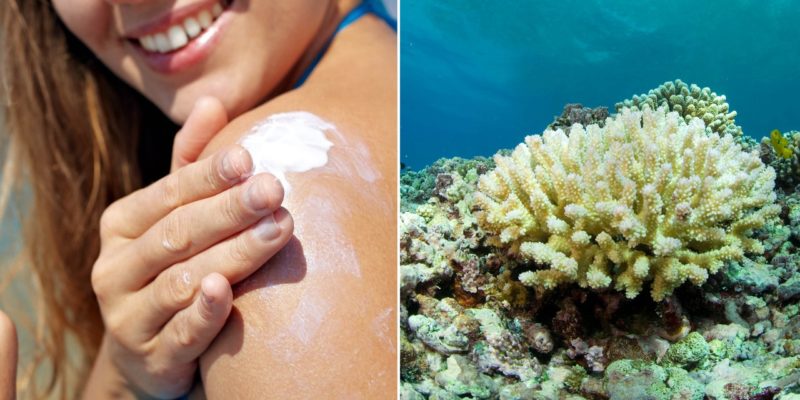Hawaii Bans Chemical Sunscreen to Save Its Coral Reefs
This story was originally published on April 21, 2017.
You’ve heard it before, from everyone, really — your mom, certainly your dermatologist, and maybe, the most obvious of sources, from us — the importance of slathering on sunscreen before heading outdoors. Some would argue that applying SPF 30 head-to-toe is almost as crucial as sipping your daily dose of water. But even as we continue to wax poetic about the dangers of sun damage and potential for skin cancer, it turns out recent studies have found that one of the most common ingredients found in chemical sunscreens could be threatening the health of the world’s coral reefs.
A 2015 study found that oxybenzone, a chemical compound associated with causing photoallergic reactions and is found in many non-mineral sunscreens, can cause major damage to coral reefs. When the ingredient washes off into the water — an inevitable occurrence as the EWG points out that an estimated 25 to 60 million (yes, million) bottles worth of sunscreen chemicals dissolve in the ocean in areas where there are coral reefs every. Single. Year. And about a quarter of the sunscreen applied to the skin is released into the water within 20 minutes of getting in it — the chemicals can make their way into the coral reefs. This can cause young coral to be trapped in their own skeletons, which hinders their growth and can ultimately lead to death.
The researchers analyzed six coastal regions in South Carolina and discovered oxybenzone in a whopping 90 percent of samples from the six sites. Another study found heavily touristed areas, including the Virgin Islands, to have a high concentration of the ingredient.
While incredibly terrifying for the future state of coral reefs, these findings aren’t going unnoticed. In fact, this past January, Hawaii state senator Will Espero introduced a bill to his state’s Congress, which suggested banning the sale of sunscreens containing the harmful-to-the-reefs ingredients oxybenzone and octinoxate in the state of Hawaii.
Because coral reefs are located across the globe (and not just in Hawaii), here’s how you can help minimize the damage to coral reefs in the meantime: When shopping for sunscreen, read the label and check the ingredients before you buy. Does the formula contain oxybenzone? If so, consider swapping out your go-to chemical SPF for something mineral-based and made with active ingredients, zinc oxide and titanium dioxide (like the Readers’ Choice Award-winning Coola Mineral Sunscreen Cucumber Matte Finish Broad Spectrum SPF 30).
Mineral-based sunscreens tend to be heavier than their chemical counterparts, so, before applying, remember to shake the formula to separate and activate it, Leslie Baumann, a dermatologist in Miami, previously told Allure. Even if it comes in a tube, give it a shimmy before applying, that way, the active ingredients will be evenly dispersed on the skin.
More sunscreen facts to know:
Now, here’s a recap on the history of sunscreen:

